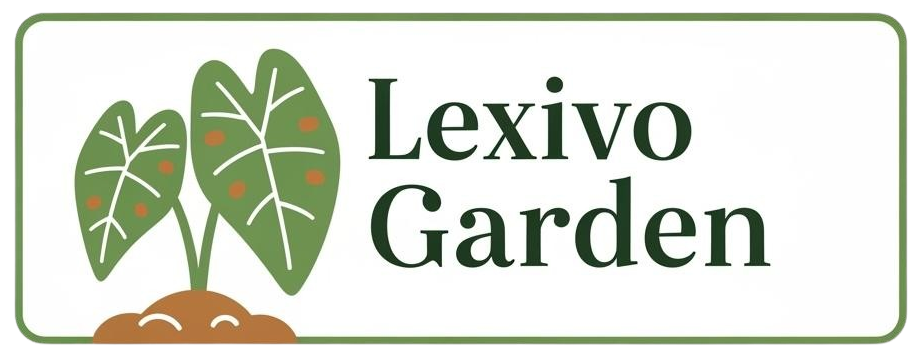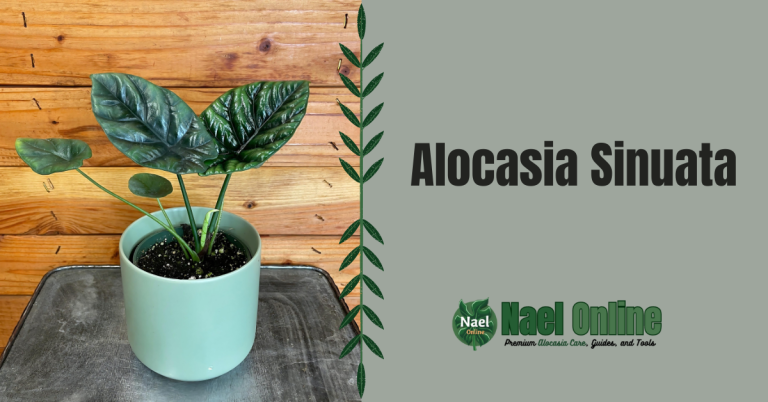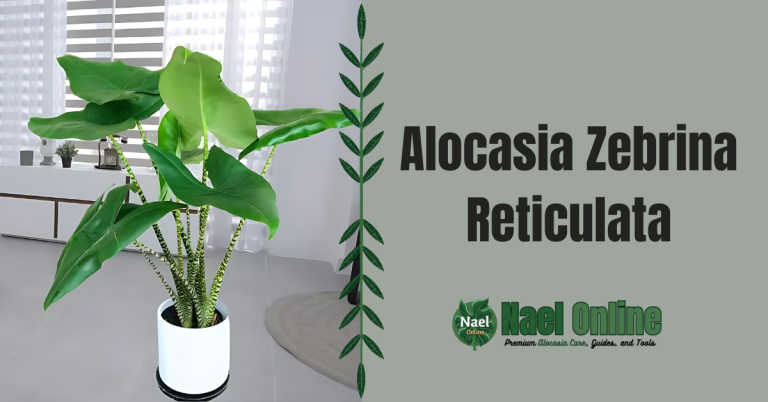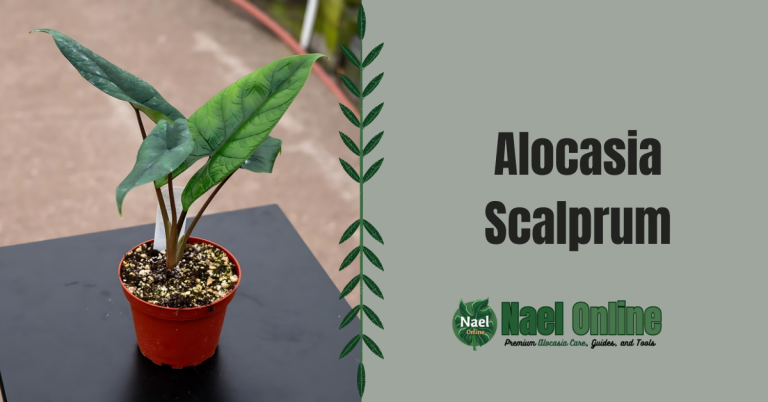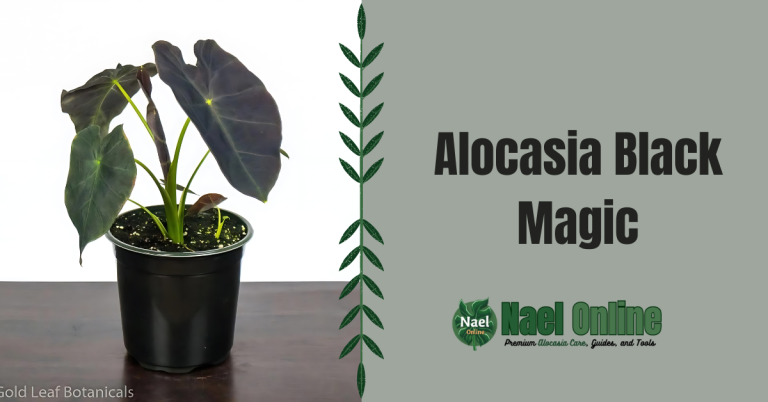Alocasia Low Rider Care: 10 Essential Guide for a Healthy Plant

Hey there, plant enthusiasts! Lucas William here from Lexivo. Today, we’re diving deep into the world of Alocasia Low Rider, a compact stunner that’s been turning heads in the houseplant community. As someone who’s been growing Alocasias for over a decade here in the USA, I’m excited to share my insights on this pint-sized beauty.
Before we get started, if you’re looking to add this gem to your collection or need some top-notch gear to care for it, swing by our shop at https://lexivo.com.ng/shop/. We’ve got everything from perfectly sized pots to premium fertilizers that’ll keep your Low Rider thriving.
What’s the Buzz About Alocasia Low Rider?
Alocasia Low Rider is the compact cousin in the Alocasia family that’s been stealing the spotlight lately. It’s perfect for plant lovers who crave the dramatic flair of Alocasias but are short on space. Trust me, I’ve grown dozens of these little guys, and they never fail to impress.
Key Points to Remember:
- Compact size, big impact
- Perfect for small spaces or as a tabletop plant
- Striking foliage with deep veins
- Relatively easy care for an Alocasia
- Slow-growing, making it ideal for busy plant parents
Getting to Know Your Alocasia Low Rider
What Exactly is an Alocasia Low Rider?
Alocasia Low Rider is a dwarf cultivar of the Alocasia genus. It’s believed to be a hybrid, though its exact parentage is a bit of a mystery. What’s not a mystery is its charm – this plant packs all the punch of its larger Alocasia relatives into a more manageable size.
Caring for Your Alocasia Low Rider: A Quick Guide
Here’s a handy table to help you keep your Low Rider happy:
| Care Aspect | Requirement |
|---|---|
| Light | Bright, indirect light |
| Water | Keep soil moist but not soggy |
| Humidity | High (60-80%) |
| Temperature | 65-80°F (18-27°C) |
| Soil | Well-draining, rich in organic matter |
| Fertilizer | Monthly during growing season |
| Repotting | Every 1-2 years |
Origin and History
While the exact origins of Alocasia Low Rider are a bit hazy, it’s thought to be a cultivar developed from Asian Alocasia species. These plants have been beloved in tropical regions for centuries, prized for their striking foliage and compact growth habit.
Common Name
Alocasia Low Rider is often simply called “Low Rider” in the plant community. I’ve heard some folks call it the “Dwarf Elephant Ear” too, which is pretty fitting given its miniature stature compared to its larger Alocasia cousins.
Scientific Name
The scientific name for this beauty is Alocasia x ‘Low Rider. The ‘x’ indicates it’s a hybrid, which explains why it’s got the best traits of multiple Alocasia species.
Why You Need an Alocasia Low Rider in Your Life
Let me tell you, after growing these for years, I can confidently say that Alocasia Low Rider brings a ton of benefits to your indoor jungle:
- Space-Saving Beauty: It’s perfect for apartments or small spaces where you want big plant energy without the big plant size.
- Air-Purifying Powerhouse: Like other Alocasias, it’s great at cleaning the air in your home.
- Conversation Starter: Trust me, plant visitors always ask about my Low Rider – it’s a real head-turner.
- Low Maintenance: For an Alocasia, it’s relatively easy to care for, making it great for busy plant parents.
- Year-Round Interest: Unlike some plants that go dormant, Low Rider keeps its leaves year-round with proper care.
Appearance and Characteristics
Alocasia Low Rider is a compact stunner that typically grows to about 12-18 inches tall. Its leaves are the real showstoppers – arrow-shaped with deep, prominent veins that give them an almost metallic sheen. The foliage is a rich, dark green that can sometimes have a slight purple undertone, especially on the undersides.
Unique Features
What sets Alocasia Low Rider apart is its ability to maintain the dramatic leaf shape and texture of larger Alocasias in a more compact form. The leaves are thick and waxy, giving them a luxurious feel. And let me tell you, when the light hits those veins just right, it’s like having a living piece of art in your home.
Caring for Your Alocasia Low Rider: The Detailed Guide
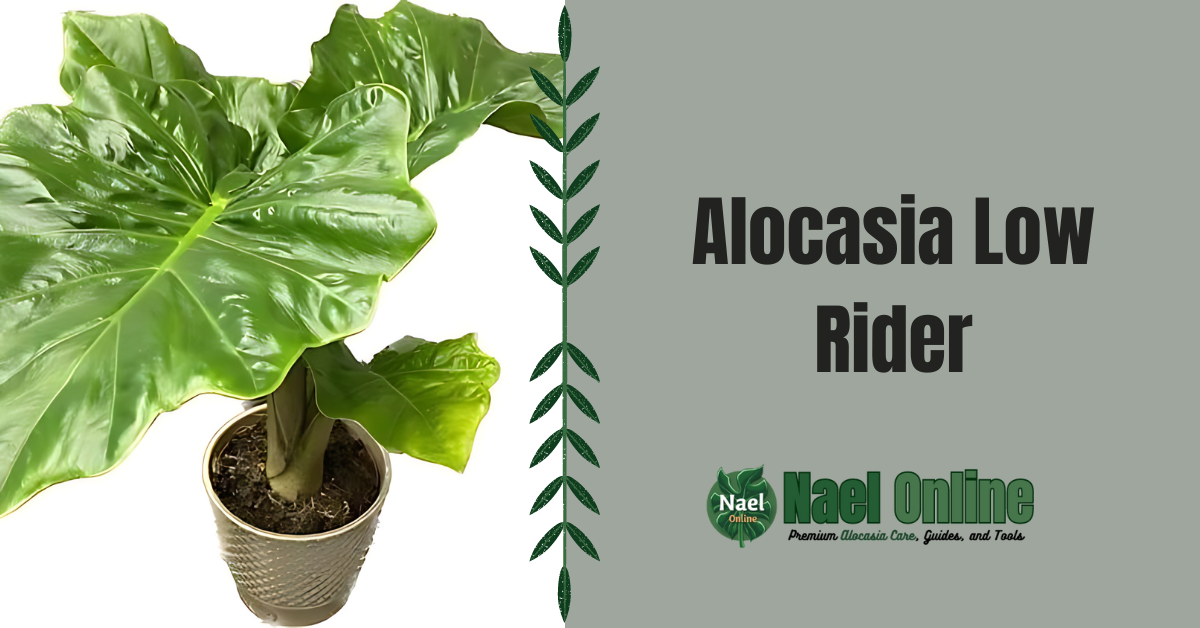
Alright, let’s roll up our sleeves and get into the nitty-gritty of keeping your Alocasia Low Rider happy and healthy. After years of trial and error (and yes, a few plant casualties along the way), I’ve got this down to a science.
Light
Alocasia Low Rider thrives in bright, indirect light. In my experience, an east-facing window is ideal. If you’ve got a south or west-facing window, just make sure to filter the light with a sheer curtain to prevent leaf burn. I’ve had success keeping mine about 3-4 feet away from a bright window.
Water
These plants like their soil to be consistently moist but not waterlogged. I water mine when the top inch of soil feels dry to the touch. In summer, this might mean watering twice a week, while in winter, once a week or less is usually sufficient. Always use room temperature water to avoid shocking the roots.
Humidity
Here’s where Alocasia Low Rider can be a bit demanding. It loves humidity – aim for 60-80% if you can. I keep a humidifier near mine and mist it regularly. Grouping it with other plants or placing it on a pebble tray can also help boost humidity.
Temperature
Keep your Low Rider cozy between 65-80°F (18-27°C). It can tolerate brief dips to 60°F, but anything lower for extended periods can damage the plant. Avoid cold drafts from windows or air conditioning units.
Soil
A well-draining, rich soil mix is crucial. I use a blend of 2 parts peat moss, 1 part perlite, and 1 part orchid bark. This mix retains moisture while still allowing excess water to drain quickly, preventing root rot.
Fertilizer
Feed your Alocasia Low Rider monthly during the growing season (spring and summer) with a balanced, water-soluble fertilizer diluted to half strength. I’ve had great results with a 10-10-10 NPK ratio. In fall and winter, reduce feeding to every 6-8 weeks.
Propagation: Spreading the Low Rider Love
Propagating Alocasia Low Rider is a bit trickier than some other houseplants, but it’s definitely doable. The most reliable method I’ve found is division:
- Wait until your plant has produced several healthy offsets.
- Carefully remove the plant from its pot and gently shake off excess soil.
- Look for natural divisions where you can separate the offsets from the mother plant.
- Using a clean, sharp knife, cut the offsets away, ensuring each has its own roots.
- Pot up the divisions in fresh, well-draining soil.
- Keep the new plants in a warm, humid environment and water sparingly until you see new growth.
Pruning: Keeping Your Low Rider in Shape
Alocasia Low Rider doesn’t require much pruning, but a little grooming can go a long way:
- Remove any yellow or damaged leaves at the base with clean, sharp scissors.
- If your plant is getting too tall for your liking, you can cut back the oldest, outermost leaves to encourage more compact growth.
- Always make cuts close to the base of the stem to prevent unsightly stubs.
Repotting: Giving Your Low Rider Room to Grow
Repotting is crucial for maintaining a healthy Alocasia Low Rider. Here’s my tried-and-true method:
- Repot every 1-2 years, or when you see roots coming out of the drainage holes.
- Choose a pot that’s 1-2 inches larger in diameter than the current one.
- Gently remove the plant from its old pot and shake off excess soil.
- Inspect the roots and trim any that are dark or mushy.
- Place fresh potting mix in the new pot, set your plant, and fill in around the roots.
- Water thoroughly and place in a warm, humid spot to recover.
Toxicity: Keeping Pets and Kids Safe
It’s important to note that Alocasia Low Rider, like all Alocasias, contains calcium oxalate crystals which are toxic if ingested. Keep this plant out of reach of curious pets and children. If ingestion occurs, seek medical attention immediately.
Common Pests and Diseases: Troubleshooting Your Low Rider
Even with the best care, Alocasia Low Rider can sometimes fall prey to pests or diseases. Here’s what to watch out for:
Pests
- Spider Mites: Look for fine webbing on leaves. Treat with neem oil or insecticidal soap.
- Mealybugs: White, cottony clusters on leaves and stems. Remove with alcohol-dipped cotton swabs.
- Scale: Brown, shell-like bumps on stems. Scrape off gently and treat with horticultural oil.
Diseases
- Root Rot: Caused by overwatering. Leaves will yellow and wilt. Remove affected roots and repot in fresh, dry soil.
- Leaf Spot: Brown or black spots on leaves. Improve air circulation and avoid getting water on leaves.
Alocasia Low Rider vs. Other Alocasias: How Does It Stack Up?
As someone who’s grown numerous Alocasia species, I can tell you that the Low Rider holds its own against its larger cousins:
- Size: Much more compact than Alocasia Polly or Alocasia Amazonica.
- Care: Generally easier to care for than larger Alocasias, which can be more temperamental.
- Growth Rate: Slower growing, which can be a plus for those who don’t want to repot frequently.
- Leaf Shape: Similar arrow shape to other Alocasias, but more compact and thicker.
Where to Buy Alocasia Low Rider
While Alocasia Low Rider isn’t as common as some other Alocasias, it’s becoming increasingly available. Check out local nurseries or specialty plant shops. Online plant retailers are also a great option. And of course, don’t forget to check our shop at https://lexivo.com.ng/shop/ – we often have these beauties in stock!
Alocasia Low Rider Price: What to Expect
Prices for Alocasia Low Rider can vary depending on size and availability. Generally, you can expect to pay anywhere from $20 to $50 for a small to medium-sized plant. Larger, more mature specimens can fetch higher prices.
Frequently Asked Questions
Q: How often should I water my Alocasia Low Rider?
A: Water when the top inch of soil feels dry. This is usually 1-2 times a week in summer, less in winter.
Q: Can Alocasia Low Rider tolerate low light?
A: While it can survive in lower light, it won’t thrive. Bright, indirect light is best for healthy growth and vibrant foliage.
Q: Why are my Alocasia Low Rider’s leaves turning yellow?
A: Yellow leaves can indicate overwatering, underwatering, or nutrient deficiency. Check your watering habits and soil moisture first.
Q: Does Alocasia Low Rider go dormant in winter?
A: It may slow its growth in winter, but with proper care, it shouldn’t lose all its leaves like some larger Alocasias do.
Q: Can I grow Alocasia Low Rider outdoors?
A: In USDA zones 10-11, yes. For cooler climates, it’s best as an indoor plant or a summer patio plant.
There you have it, folks – everything you need to know about the charming Alocasia Low Rider. Remember, every plant is unique, so don’t be afraid to adjust your care routine as you get to know your new green friend. And if you need any supplies to keep your Low Rider happy, don’t forget to check out our shop at https://lexivo.com.ng/shop/. Happy growing!
